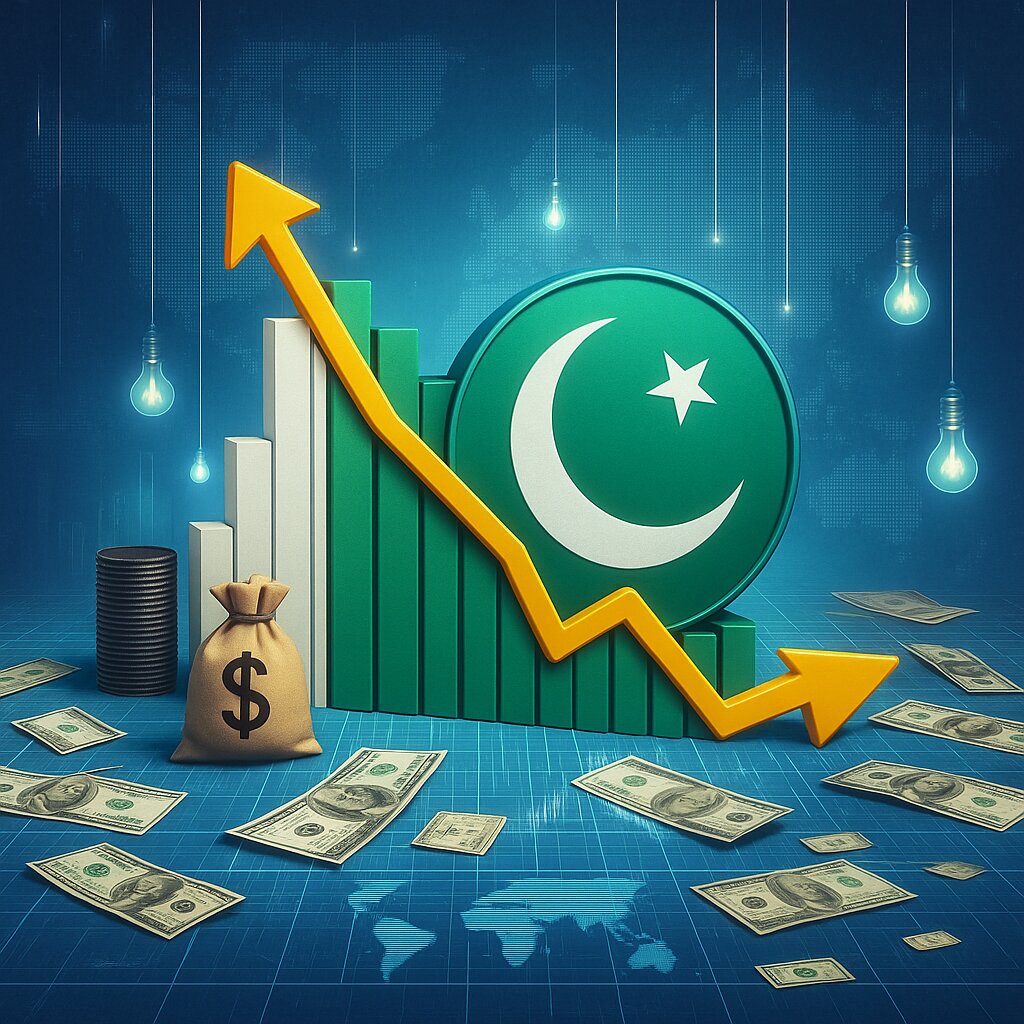
In a development few saw coming so sharply, Pakistan’s national inflation rate plummeted to a record low of 0.30% in April 2025, marking a dramatic shift in the country’s cost-of-living trajectory. This drop from 0.70% in March reflects a combination of policy tightening, improved food supply, and favorable base effects. According to the Pakistan Bureau of Statistics (PBS), this is the lowest monthly inflation recorded since the rebasing of national price indices.
Key Drivers of the April Drop
The April 2025 decline in inflation was primarily driven by significant corrections in perishable food items and energy-related commodities. The Consumer Price Index (CPI), as reported by PBS, reveals that food inflation declined in both urban and rural areas, with particular drops in vegetable and fruit prices. For instance:
| Item | MoM Change (%) |
| Tomatoes | -23.91 |
| Onions | -18.34 |
| Chicken | -7.13 |
| Electricity Charges | -6.00 |
On the energy front, the government’s decision to reduce petroleum and diesel prices by PKR 2 per liter at the start of April had a trickle-down effect across transport and logistics sectors. The PBS report also shows a stabilization in housing and utilities pricing, adding to the soft inflationary reading.
Regional Insights and Urban-Rural Split
PBS data indicates that urban inflation clocked in at just 0.25%, while rural inflation was slightly higher at 0.36%. This slight variance is attributed to slower transmission of food price corrections in rural markets and ongoing transportation bottlenecks.
Further breakdown reveals that the core inflation—which excludes food and energy—remained sticky at 6.8% year-on-year, indicating underlying inflationary pressures are not yet fully extinguished.
| Region | Inflation April 2025 (%) | March 2025 (%) |
| Urban | 0.25 | 0.66 |
| Rural | 0.36 | 0.75 |
| National Avg. | 0.30 | 0.70 |
This differentiation is essential for fiscal planning, as it shapes the focus of federal subsidies and provincial price stabilization measures.
Fiscal and Monetary Policy Implications
The sharp drop in headline inflation provides breathing space to both the Ministry of Finance and the State Bank of Pakistan (SBP). With inflation seemingly under control, pressure on the SBP to maintain its current benchmark interest rate of 22% may ease, paving the way for a gradual easing cycle in the latter half of 2025.
Moreover, the Ministry of Finance may now consider recalibrating energy subsidies and reviewing tax relief measures, which were introduced during high-inflation periods, to optimize fiscal space for development expenditures. However, caution is warranted, as core inflation remains elevated, and any surge in global commodity prices or currency volatility could reverse the current trend.
Is This the Start of a New Trend?
While the data is encouraging, experts urge restraint in interpreting this as a structural shift. According to the PBS press release, part of the April decline is attributable to high base effects from the same month last year, when inflation was above 35%. With global oil prices stabilizing and food imports increasing, the supply-side conditions have improved—but the demand-side corrections are still fragile.
Pakistan’s economy, which has recently shown signs of stabilizing—reflected in modest GDP growth projections of 2.6% for FY2025—can benefit significantly if this low inflation trend continues. It can restore purchasing power, stimulate investment, and ease pressure on both public and private borrowing.
However, policymakers must remain vigilant. Any complacency in structural reforms, particularly in energy pricing, tax rationalization, and import dependency, could derail this positive momentum.
The PBS April 2025 CPI Report is a reminder that while data offers hope, the path to economic stability is complex and requires sustained commitment.
The article was published on Publicfinance.pk.
